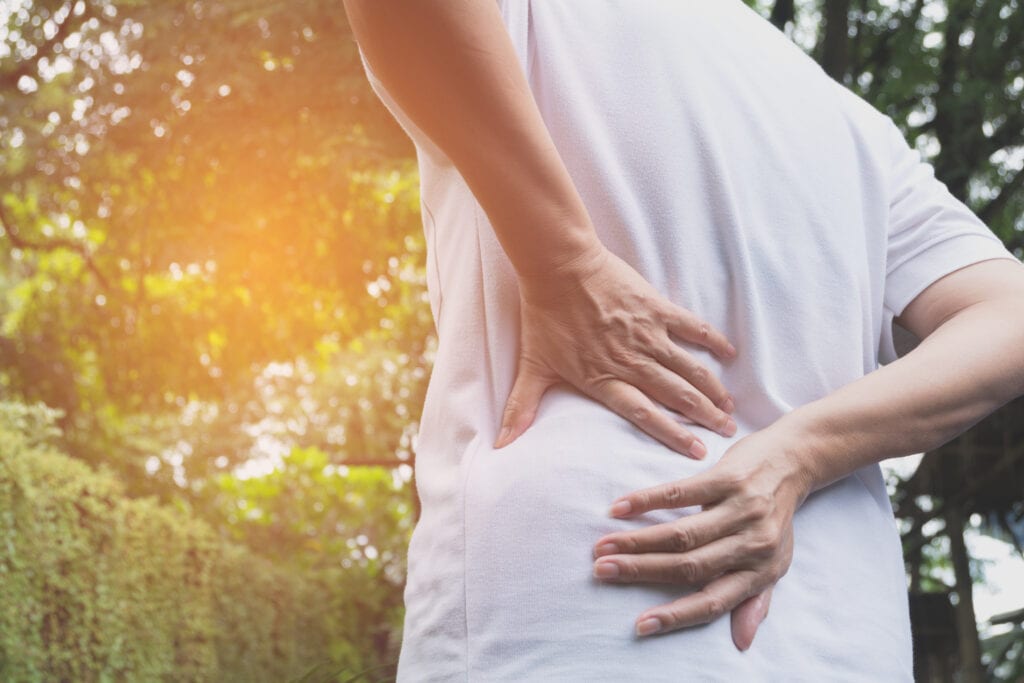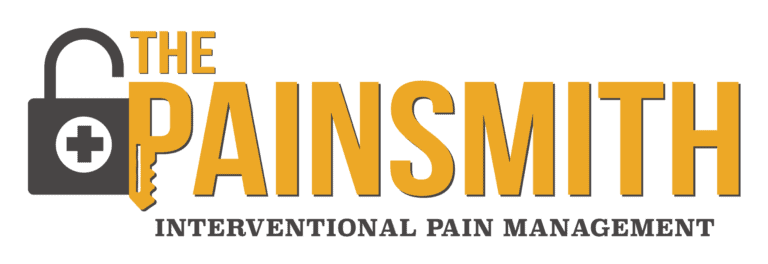Back pain, especially lower back pain, is unfortunately very common. More than 80% of adults have suffered from back pain at some point in their lives. It can have many causes including athletic or traumatic injury, or age-related degeneration. Some pain may be temporary and resolve on its own, but some types of back pain require medical intervention to manage.
How your back works
The spine, which is also called the backbone or spinal column, is one of the strongest parts of the body and provides your body with a great deal of flexibility and strength.
Your spine is made up of a series of small bones (vertebrae) that are stacked on top of each other to create the spinal column that protects your spinal cord. Between each vertebra is a soft, gel-like cushion called a disc that helps absorb pressure and keep the bones from rubbing against each other. Each vertebra is connected to the others with ligaments. The spinal column also has facet joints that link the vertebrae together. These joints have cartilage that allow the vertebrae to slide against each other so you can twist, turn, and move your body.
As you grow older, the various structures of your spine, such as the joints, discs and ligaments, age as well. Many people also regularly perform tasks that utilize the muscles, nerves and ligaments of their back and spine. As you age, and when you overexert the structures of your spine, your upper and lower back will start to degenerate.
Table of Contents
Causes of Back Pain
Back pain can be the result of many different causes. As mentioned, the spine and back are prone to degeneration. Degeneration can result from poor posture, degenerative diseases like arthritis, pain after back surgery, and regular wear and tear. In turn, this degeneration causes what many people know as back pain. Acute muscle, ligament, nerve, and spine injuries are also frequent causes of this pain.
Compressed, pinched, or irritated nerves
A pinched nerve occurs when too much pressure (compression) is applied to a nerve by surrounding tissues. The pressure may be the result of repetitive motions. Or it may happen from holding your body in one position for long periods, such as keeping elbows bent while sleeping.
In some cases, this tissue might be bone or cartilage, such as in the case of a herniated spinal disk that compresses a nerve root. In other cases, muscle or tendons may cause the condition.
Bone spurs
Bone spurs are bony projections that develop along bone edges. Bone spurs (osteophytes) often form where bones meet each other — in your joints. They can also form on the bones of your spine. Most bone spurs cause no signs or symptoms. You might not realize you have bone spurs until an X-ray for another condition reveals the growths. In some cases, though, bone spurs can cause pain and loss of motion in your joints.
Narrowing of spinal canal (Spinal Stenosis)
Spinal stenosis, a narrowing of the spaces in your spine, can compress your spinal cord and nerve roots exiting each vertebrae. Age-related changes in your spine is a common cause. The narrowing usually occurs over time and involves one or more areas of the spine.

Degenerative Disc Disease
The disc is the shock absorber of the spine and it can start wearing out from years of wear and tear or from previous injuries. Degenerative discs can cause pain and reduced mobility. Typically, there will also be degeneration present in other parts of the spine, including the joints in the back of the spine called facet joints.
Slipped Vertebrae or Spondylolisthesis
Slipped bones can occur from a defect in the bone or a previous fracture in the thin ring in the back of the vertebral body. When the ring that keeps the vertebrae in place is no longer intact, the bone can start sliding backward or forward, a condition called spondylolisthesis. It may also start to pinch the nerves in the back of the spine.
Herniated discs
Herniated discs occur when the softer filling of the discs leaks out (typically via a tear of the cartilage) and into the nerve space. This is very inflammatory and can cause intense pain and mobility issues. It also can result in numbness and tingling for many patients.
Spinal Stress Fractures
Spinal fractures can be caused by acute injuries but can also result from decreased bone density. People with osteoporosis are at a considerably higher risk of sustaining a compression fracture from even relatively minor falls and injuries. Additionally, many people over the age of 60 will develop small hairline fractures in their spinal column. Over time, these tiny cracks will build up, causing a “wedge” shape of the vertebral body. This can cause loss of height, pain, and stiffness.
Failed Back Surgery Syndrome
Lumbar post-laminectomy syndrome (failed back surgery syndrome) occurs when a patient continues to experience significant pain after they have had a spine or back surgery.
Treatments
The treatment for back pain depends on its cause, severity, and duration. It is often conservative and may be limited to anti-inflammatory medication and physical therapy. The majority of back symptoms are treatable with pain medications, short periods of rest, and exercise. Persistent back pain, or back pain associated with weakness or radiating pain, may require further intervention. Surgical intervention can be beneficial, but it is necessary in certain conditions only.
Non-Surgical or Minimally invasive Interventional Treatments
These treatments can range from steroid injections, nerve root injections, nerve ablations or spinal cord stimulation to help eliminate or reduce pain.
- Epidural Steroid Injections (ESIs)
- Injections that provide pain relief in the cervical, lumbar, and thoracic spine.
- Facet Joint Injections
- Joint injections that anesthetize the facet joints and block pain.
- Radiofrequency Nerve Ablation
- A high-frequency electrical current used to cauterize or “ablate” nerves in the body.
- Spinal Cord Stimulation
- Implanted devices used to relieve the pain signals that are being communicated through the spinal cord.
- Kyphoplasty / Vertebroplasty
- Injections of bone cement used to stabilize and restore height in a vertebral fracture
- Trigger Point Injections
- injections of a local anesthetic with or without corticosteroids
If you are looking for back pain treatment in San Antonio, we can help. At The PainSmith, we provide customized and compassionate pain management care. We offer a variety of diagnostic procedures designed to pinpoint the source of your back pain. During a one-on-one consultation, your doctor will evaluate your symptoms, lifestyle, and medical history to identify the problem and develop an effective treatment plan that best meets your needs and goals.
For more information on back pain treatment in San Antonio, TX, give us a call today at (210) 963-7493. If you would like to request an appointment online, you can do so through our convenient online appointment request form.

